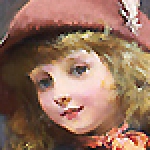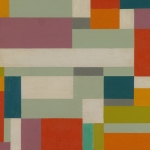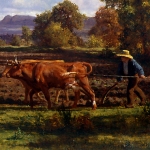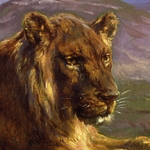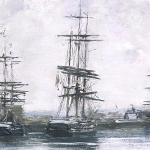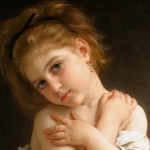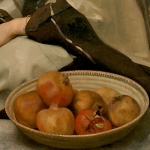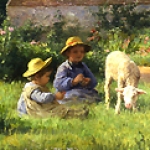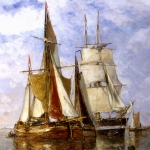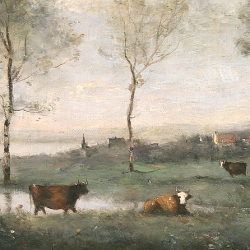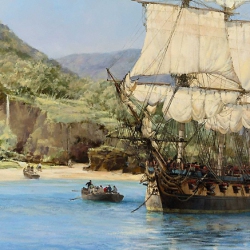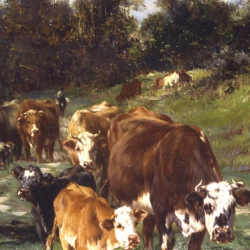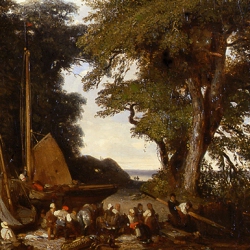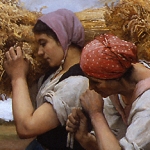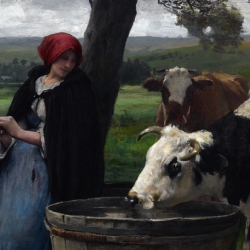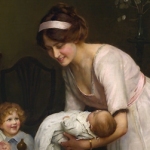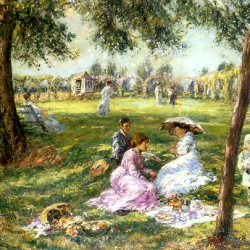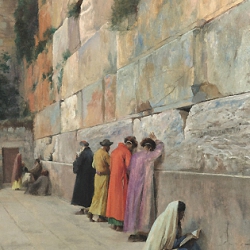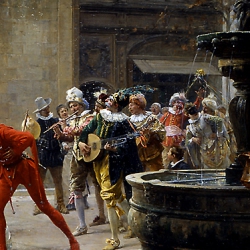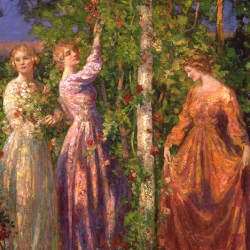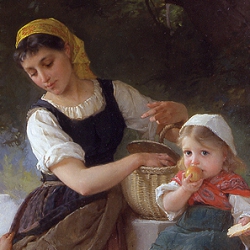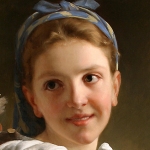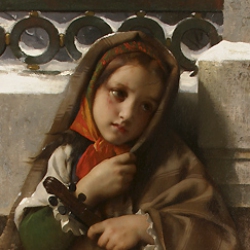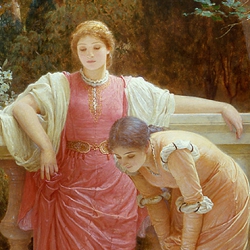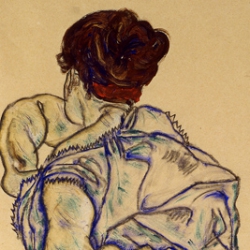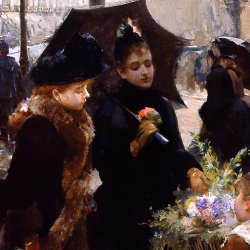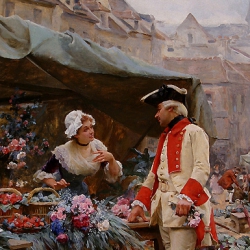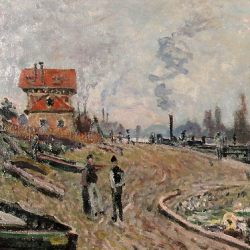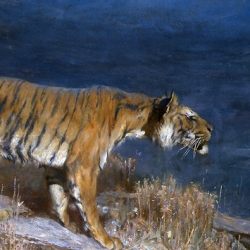|
La Prairie
 JULIEN DUPRE
(1851 - 1910)
La Prairie
Oil on canvas
37 1/2 x 59 3/8 inches
Signed and dated 1889
Provenance:
The artist (no. 153) Exhibited:
Paris Salon, 1889 Working during the last half of the 19th century, Julien Dupré was an artist, considered by most, to be one of the leading exponents of the second generation of Realist painters; a group that also includes Leon Lhermitte, Jules Bastien-Lepage and Pascal Dagnan-Bouveret. Like J.F. Millet and J. Breton, before them, these artists devoted their artistic careers to the depiction of the toils of the French peasant - often seen hard at work in the fields. As Hollister Sturges states in Jules Breton and the French Rural Tradition (1982, Joslyn Art Museum) Dupré received his artistic training in the academic studios of Isidore Pils, Desire-Francois Laugée and Henri Lehmann. He exhibited his first painting at the Paris Salon in 1876 and thereafter, became a regular exhibitor until his death in 1910. In 1880 he was awarded a third-class medal for Faucheurs de Luzerne and in 1881 he received a second-class medal for his La Recolte des Foins. He was honored with a gold medal at the Paris Fair of 1889 and in 1892 was awarded the Legion of Honor. His work was sought after internationally and he found a good market in the United States. In 1891 Marion H. Speilman, in his article entitled "The White Cow" (The Magazine of Art, 1891, Vol. 14, p. 415), describes Dupré as: ...one of the most rising artists of the French School. H e is individual in his work, accurate as an observer, earnest as a painter, healthy in his instincts and intensely artistic in his impressions and translations of them... he is always one of the attractions at the Salon.
Acknowledging his mastery at portraying both animals and humans powerfully, yet gracefully, one cannot help but pay tribute to his immense talent in being able to re-create nature's light on canvas - a feat that many have attempted but few have succeeded in accomplishing. Whether it is the light filtering through a group of trees onto the figures and animals below or the warm effulgent sun bathing the lush French countryside, Dupré is always true to nature. Speilman goes on to remark that: In The White Cow which was amongst the finest works in last year's Salon, several of M. Dupré's merits as a painter are exemplified. The cow - taking a patient and intelligent interest in the operation of milking - is superbly drawn, and her expression admirably rendered. The light and shade, the balance of composition, and the rendering and disposition of the figures combine in this picture to produce a canvas which pleases the spectator the more he examines it. Works in public collections (partial listing): Haying Scene (1884) - St. Louis Art Museum, St. Louis, MO. The Haymakers (1886) - Worcester Art Museum, Worcester, MA. Return From the Fields (n.d.) - Joslyn Art Museum, Omaha, NE. In Pasture (1882) - Washington University Art Gallery, St. Louis, MO. Haying Scene (1882) - Washington University Art Gallery, St. Louis, MO. Young Woman Watering Cattle - Museum of Fine Arts, Boston, MA. Haymaking (1892) - Museum of Fine Arts, Boston, MA. Children Feeding Geese (1881) - Museum of Fine Arts, Boston, MA. Peasant Girl with Sheep - The Fine Arts Museums of San Francisco, CA. Milking Time - The Fine Arts Museums of San Francisco, CA. Women in the Fields - Bowdoin College Museum of Art, Brunswick, ME. The Young Shepherdess - San Diego Museum of Art, San Diego, CA. In the Pasture (1883) - University of Kentucky Art Museum, Lexington, KY. Le Ballon (1886) - Reading Public Museum and Art Gallery, Reading, PA. |
|
|||||||


